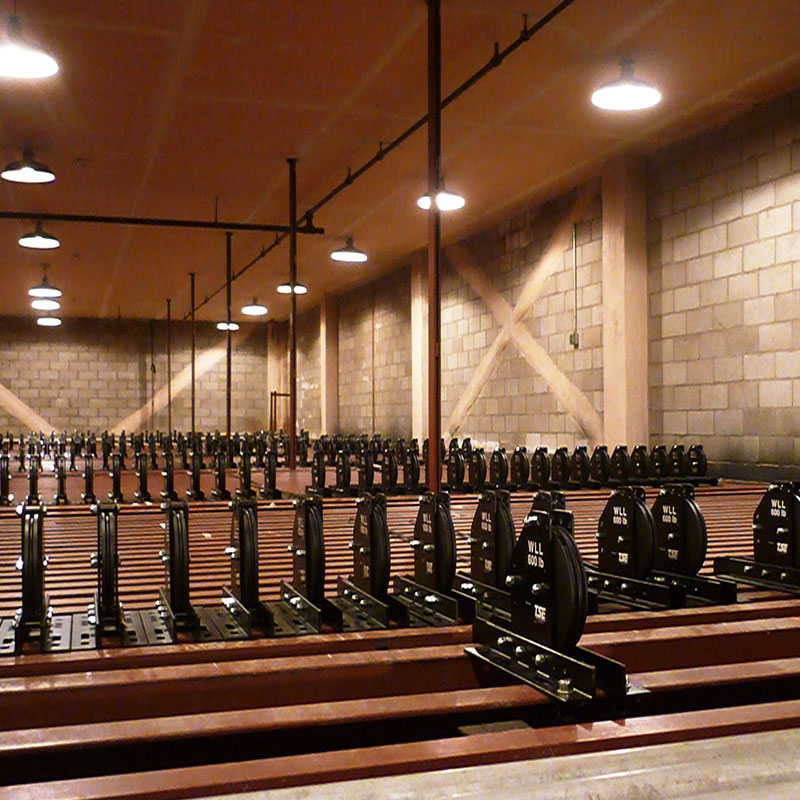Seven Things You Should Know About Stage Rigging:
Stage rigging solutions, despite their significance in a theatrical production, are often overlooked. It’s common to know facts about the actors, directors, costumes, or props of a theatrical production, while the facts about the technical aspects of a play tend to remain backstage.
Here are seven things you should know about stage rigging:
-
Before theatrical stage rigging there was stage machinery:
In the early years of theater, upper machinery operated scenery hanging in the rafters and lower machinery from under the stage. These mechanics were used to make set stages in full view during a performance to impress the audience (Boychuck 9).
-
Counterweight rigging evolved from the wood stage machinery.
The counterweight rigging method is believed to have originated from the hemp rigging used in theaters throughout the United States. In reality, counterweight rigging developed outside of the United States, inspired by the wooden stage machinery of Europe (Boychuck 9). Once counterweight rigging systems came across the pond, it was the masonic temples and Scottish Rite Cathedrals that continued the evolution (Boychuk 12).
-
Historically, counterweight rigging was developed and more popular in Europe while hemp rigging was more popular in the US.
Counterweight rigging was first established in the US in 1889 in Chicago. It became a more popular solution to theatrical lifting in the US when it became cheaper than hemp rigging (Boychuk 9, 11).
-
Plastic is a stronger and more durable rigging material in stage rigging blocks.
Over 30 years ago, high performance nylon was introduced as a material for the sheaves in stage rigging blocks. Today, a proprietary nylon product, Nylatron™, is used for the majority of stage sheaves. Nylon sheaves have a resistance to groove pressure and prolong the life of blocks and wire rope. Also, blocks with nylon sheaves are 15% lighter, less expensive to produce, and reduce wear, noise, and friction on a counterweight line set.
-
Enclosed counterweight arbors have existed for over a century.
In the early 1900’s, enclosed counterweight arbors, such as the “Box Arbor”, were available (Boychuk 94). In 2009 Thern Stage Equipment introduced the Brickhouse™, the first front loading arbor and enclosed steel arbor. It’s made to work with existing stage weights, making counterweight installation and adjustment a convenience.
-
Rope locks do not lock, they cause friction!
Rope locks are often a misunderstood device. Belaying pins were traditionally used to secure ropes and hold scenery above the stage. These require special skill and several seconds to tie properly. Rope locks don’t actually lock anything, but serve as a mechanical belaying device that grip the purchase line and prevent it from moving. The Brickhouse™ Rope Locks are designed to act just like belaying devices through the application of friction without squeezing or crushing the rope.
-
Not all clew winches have the same quality.
Clew winches have been used in theatres for many decades to lift and hold equipment above a stage. But not all of them are alike! Beware of old cast iron clew winches with exposed gears and single-cable lifting mechanisms. They were never meant to be used for lifting above stages and therefore aren’t load rated. Modern clew winches should meet ANSI standards (E1.4-3) and provide a load rating specifically designed for holding loads above a stage.
Thern Stage Equipment has a high standard when it comes to serving clients in the theater and entertainment market. Knowing the history and mechanics of the equipment Thern Stage manufactures is vital to upholding that high standard.
Contact the sales team at Thern Stage Equipment and elevate your performance today.
Sources:
Boychuck, Rick. Nobody Looks Up: The History of the Counterweight Rigging System: 1500 to 1925, Richard William Boychuk, 2015, 9-12, 94.




